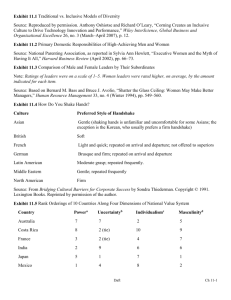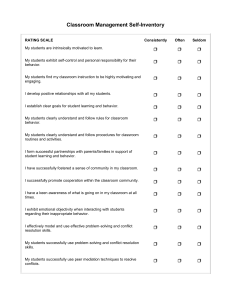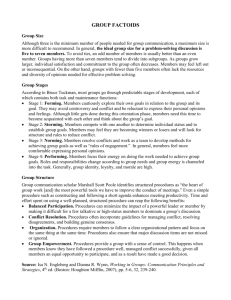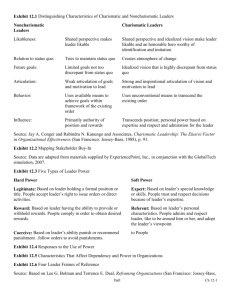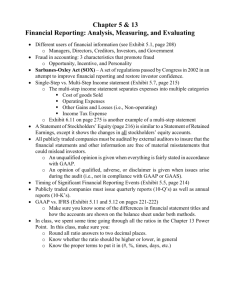Chapter 10: Leading Teams
advertisement
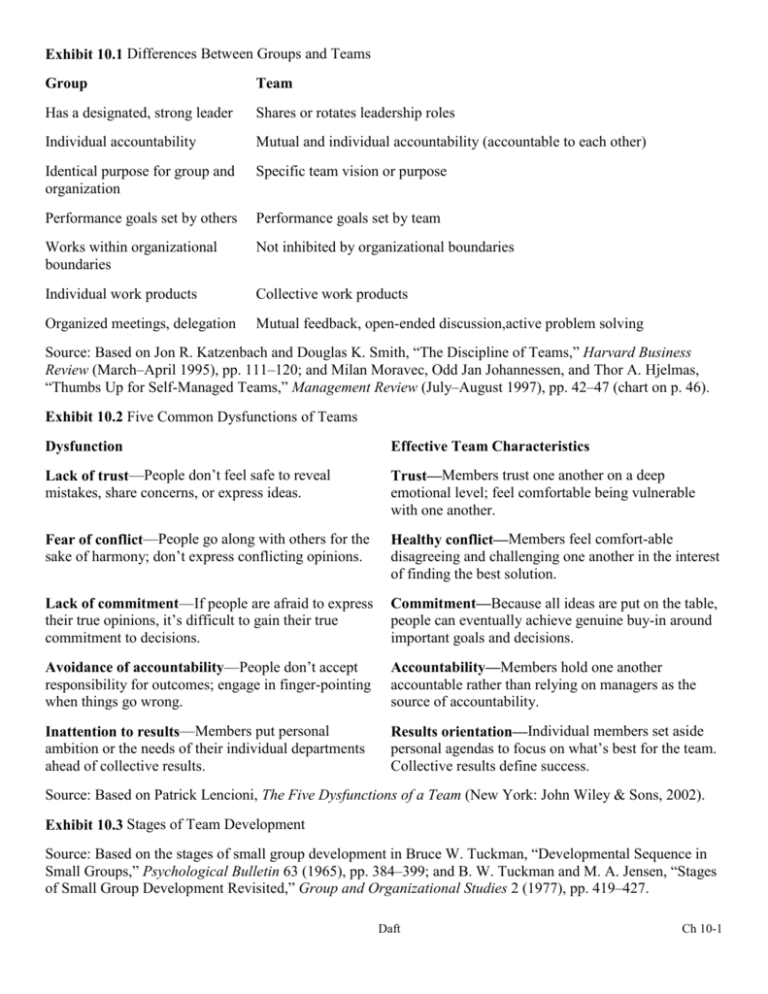
Exhibit 10.1 Differences Between Groups and Teams Group Team Has a designated, strong leader Shares or rotates leadership roles Individual accountability Mutual and individual accountability (accountable to each other) Identical purpose for group and organization Specific team vision or purpose Performance goals set by others Performance goals set by team Works within organizational boundaries Not inhibited by organizational boundaries Individual work products Collective work products Organized meetings, delegation Mutual feedback, open-ended discussion,active problem solving Source: Based on Jon R. Katzenbach and Douglas K. Smith, “The Discipline of Teams,” Harvard Business Review (March–April 1995), pp. 111–120; and Milan Moravec, Odd Jan Johannessen, and Thor A. Hjelmas, “Thumbs Up for Self-Managed Teams,” Management Review (July–August 1997), pp. 42–47 (chart on p. 46). Exhibit 10.2 Five Common Dysfunctions of Teams Dysfunction Effective Team Characteristics Lack of trust—People don’t feel safe to reveal mistakes, share concerns, or express ideas. Trust—Members trust one another on a deep emotional level; feel comfortable being vulnerable with one another. Fear of conflict—People go along with others for the sake of harmony; don’t express conflicting opinions. Healthy conflict—Members feel comfort-able disagreeing and challenging one another in the interest of finding the best solution. Lack of commitment—If people are afraid to express their true opinions, it’s difficult to gain their true commitment to decisions. Commitment—Because all ideas are put on the table, people can eventually achieve genuine buy-in around important goals and decisions. Avoidance of accountability—People don’t accept responsibility for outcomes; engage in finger-pointing when things go wrong. Accountability—Members hold one another accountable rather than relying on managers as the source of accountability. Inattention to results—Members put personal ambition or the needs of their individual departments ahead of collective results. Results orientation—Individual members set aside personal agendas to focus on what’s best for the team. Collective results define success. Source: Based on Patrick Lencioni, The Five Dysfunctions of a Team (New York: John Wiley & Sons, 2002). Exhibit 10.3 Stages of Team Development Source: Based on the stages of small group development in Bruce W. Tuckman, “Developmental Sequence in Small Groups,” Psychological Bulletin 63 (1965), pp. 384–399; and B. W. Tuckman and M. A. Jensen, “Stages of Small Group Development Revisited,” Group and Organizational Studies 2 (1977), pp. 419–427. Daft Ch 10-1 Exhibit 10.4 Evolution of Teams and Team Leadership Exhibit 10.5 Two Types of Team Leadership Roles Task-Specialist Role Socioemotional Role Initiate ideas. Propose solutions and stimulate new ways of looking at problems. Encourage others. Be warm and receptive; draw others out and encourage their contributions. Give opinions. Offer opinions on task solutions; give candid feedback on others’ suggestions. Reconcile differences. Smooth over conflicts; reduce tension and help others resolve differences. Seek information. Ask for facts to clarify tasks, responsibilities, and suggestions. Provide friendship and support. Act friendly and supportive; show concern for members’ feelings. Pull ideas together. Relate various ideas to the problem at hand; summarize suggestions. Go along with the team. Be willing to compromise and go along with others’ ideas; follow and remind others of agreed-upon norms for behavior. Stimulate action. Energize others and spur the team to action when interest wanes. Maintain harmony. Seek to identify and correct dysfunctional behavior or problems with team interactions. Source: Based on Robert A. Baron, Behavior in Organizations, 2nd ed. (Boston: Allyn & Bacon, 1986); Don Hellriegel, John W. Slocum, Jr., and Richard W. Woodman, Organizational Behavior, 8th ed. (Cincinnati, OH: South-Western, 1998), p. 244; and Gary A. Yukl, Leadership in Organizations, 4th ed. (Upper Saddle River, NJ: Prentice Hall, 1998), pp. 384–387. Exhibit 10.6 Differences Between Conventional, Virtual, and Global Teams Type of Team Spatial Distance Conventional Colocated Communications Member Cultures Leader Challenge Face to face Same High Virtual Scattered Mediated Same Higher Global Widely scattered Mediated Different Very high Exhibit 10.7 A Model of Styles to Handle Conflict Source: Adapted from Kenneth Thomas, “Conflict and Conflict Management,” in M. D. Dunnette, ed., Handbook of Industrial and Organizational Behavior (New York: John Wiley & Sons, 1976), p. 900. Used by permission of Marvin D. Dunnette. Ch 10-2 Daft

